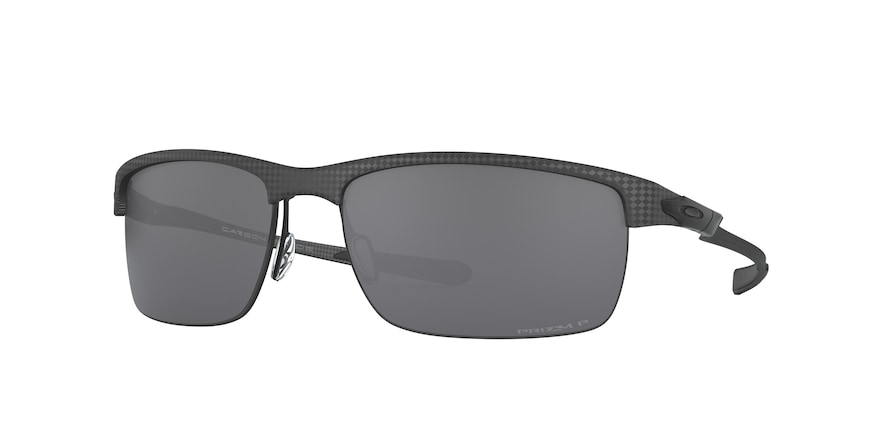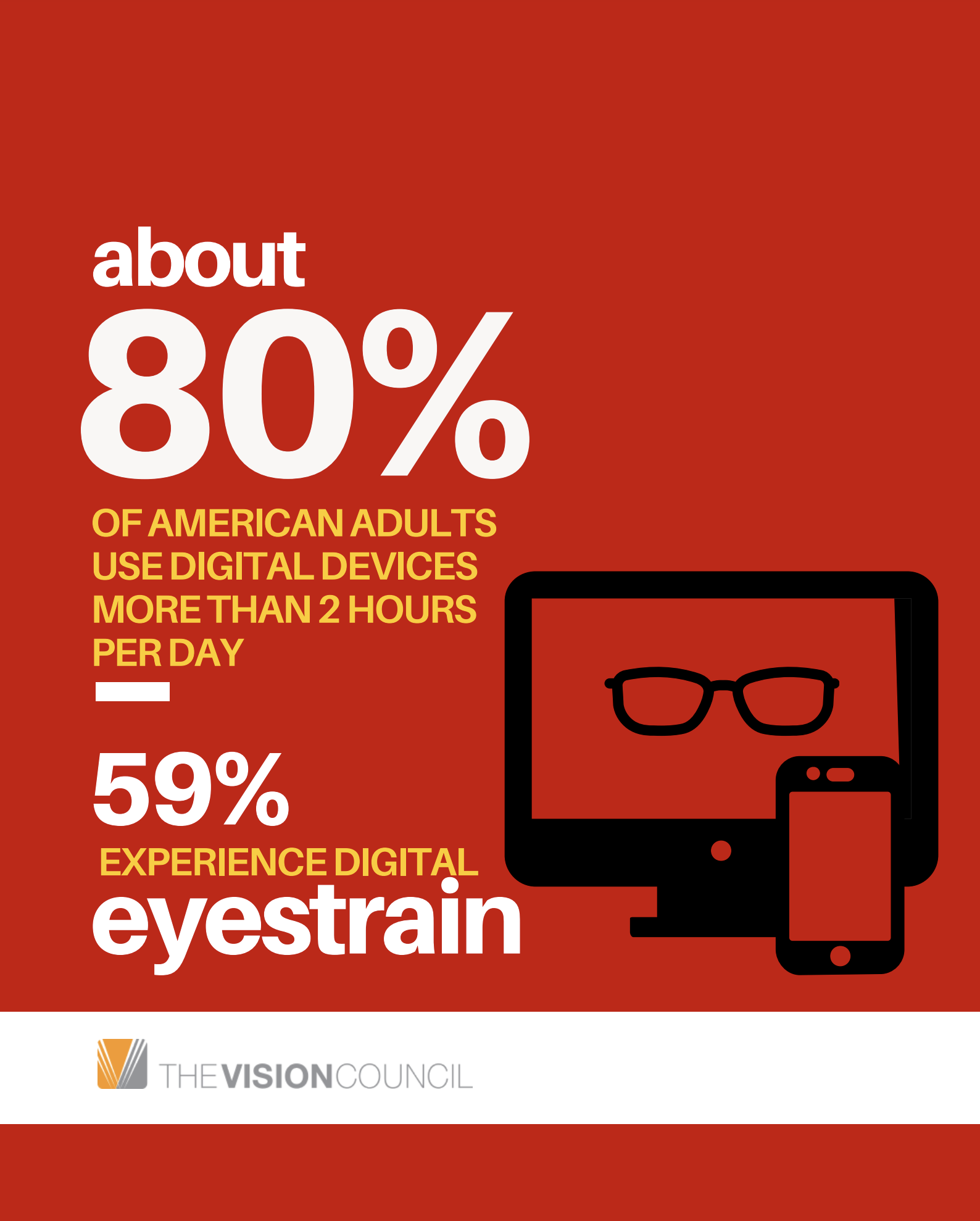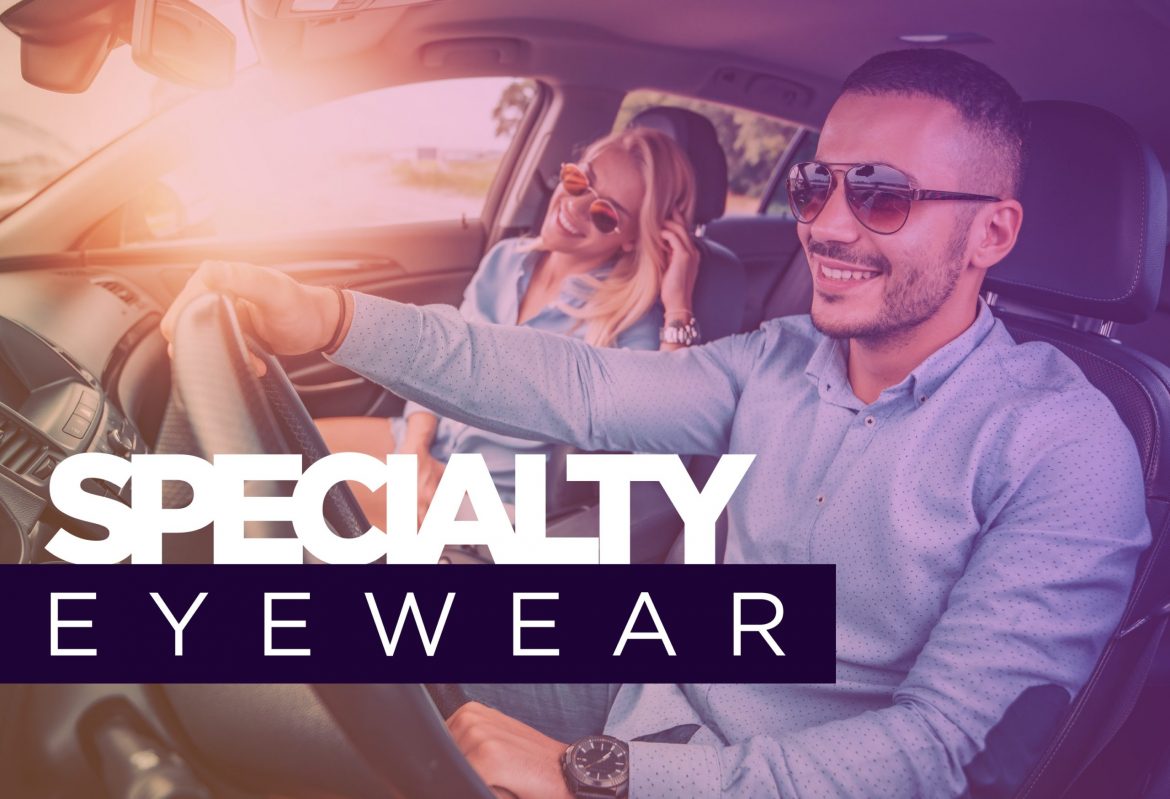![]()
What is specialty eyewear?
Unsurprisingly, AllAboutVision.com explains specialty eyewear is simply eyeglasses designed for specialized tasks. They cite The Vision Council, which reports the most common reasons for needing specialty eyewear include:
- Supporting an activity such as driving or sports
- Protecting the eyes during sports or work
Maybe you spend time building model airplanes or making jewelry and need better close-up vision. Like so many others, you may require eyewear to help you focus on the work you do for prolonged periods of time on a computer.
Whatever the reason, read on to find out if you might benefit from the various types of specialty eyewear.
Eyewear for driving
The demand for “driving glasses” continues to rise. I put the phrase in quotes because while driving presents special needs, there really isn’t a viable class of glasses specifically made for the activity. Still, I’ll try to shed some light on the various types of eyewear often described as “driving glasses.”
If you struggle with glare when you’re behind the wheel, your so-called driving glasses should have polarized lenses, which will reduce the glare significantly.
Polarized lenses
Polarized lenses are coated with a thin chemical laminate that filters out excess light and reduces eye strain. Technically speaking, polarized lenses reduce glare by blocking horizontal light rays.
If you wear prescription glasses, you have the option to order prescription sunglasses with polarized lenses. If you wear contacts—or don’t need prescription glasses—your driving glasses can simply be sunglasses with polarized lenses.

A popular favorite with polarized lenses:
Oakley OO9174 CARBON BLADE
An additional pair of glasses
Another form of driving glasses might be glasses you’re prescribed when you ask your eye doctor for them. You see, if your prescription is specifically for near vision, for the sake of safety, you’ll want a different set of glasses for driving.
Anti-reflective coating
For good measure, if you wear prescription eyeglasses to correct nearsightedness, farsightedness or astigmatism, order lenses with anti-reflective (AR) coating. The coating will allow more visible light through while eliminating internal reflections from streetlights and headlights.

A word of warning: if you don’t require prescription eyewear, don’t waste your money on clear lenses with anti-reflective coating for driving. AR coating only reduces glare caused by the lenses themselves, so non-prescription lenses with AR coating offer no benefit.
Learn more about your anti-reflective coating options here.
Night driving glasses
For better or worse, people that complain of having vision issues when driving at night sometimes buy “night driving glasses.”
Are they buying an actual solution? No.
Classes marketed as night driving glasses are essentially non-prescription eyeglasses with lenses tinted yellow. Hunters often wear them because they enhance contrast in certain daylight conditions. Eye care professionals do not recommend yellow-tinted glasses for night driving. Research has proven they are ineffective.
Eyewear for office work

Eyewear for office work now goes by a variety of names including:
- Computer glasses
- Occupational glasses
- Workspace progressives
- Near vision focus
This style of lens is relatively new, often unknown, sometimes misunderstood, and not available from all vendors. To further the confusion, different lens manufacturers describe similar products differently and offer somewhat subtle variations. Case in point, near vision lenses tend to deliver a variety of focal lengths to accommodate different work environments and applications.
Confused? I’ll try to be clear because so many people spend all day, or at least, many hours working at a computer.

Your eyes can become strained when they remain focused on the same short distance for hours at a time. In addition to eye strain, “computer vision syndrome” can cause headaches, blurred vision, and dry eyes.
The specialty glasses known as computer glasses (or the other terms mentioned above) can help remedy this issue.
Computer glasses are specifically designed for close-up and intermediate distances to combat eye strain and increase clarity. They’ve proven to be a better choice than general-purpose progressive lenses or bifocals for those with presbyopia because such lenses don’t have a large section dedicated to the intermediate distance used for viewing computers and digital devices.
If you get by with progressive lenses but find yourself tilting your head to find the sweet spot when computing, you’re a good candidate for computer glasses.
Blue light filtering
Do blue light glasses work? The truth is, there’s not a lot of research to adequately answer the question.
The American Academy of Ophthalmology (AAO) claims blue light from digital devices doesn’t cause eyestrain, nor does lead to eye disease. It goes on to state the problems people complain about are simply caused by the overuse of digital devices.
If you’re concerned about how blue light affects your eyes or hinders your sleep, the AAO recommends the following:
- Adjust your seat or computer so your eyes are about 25 inches from the screen.
- Position the screen so you’re gazing slightly downward.
- Use a matte screen filter to reduce glare.
- If you wear contact lenses, give your eyes a break by wearing glasses occasionally.
Additionally, be aware that your smartphone offers a “night mode” that decreases screen brightness to reduce eye strain. Night mode uses warmer colors and is reputed to make it easier to fall asleep than it would be if you were reading your phone in regular display mode before going to bed.
Safety glasses
According to All About Vision’s, Gary Heiting, OD, “Each year more than 700,000 Americans injure their eyes at work, and another 125,000 injure their eyes at home.”
What better way to avoid such an injury than to invest in a pair of safety glasses or goggles? Safety glasses are more durable than regular eyewear because both the frames and lenses are designed to withstand more resistance.
Safety glasses are available in prescription and non-prescription form. Prescription safety eyewear must meet a strict number of standards established by the American National Standards Institute and carried out by the Occupational Safety and Health Administration (OSHA).
Hobby glasses
Single vision reading glasses aren’t only for reading. They can also help remedy eyestrain while doing close-up hobby work like needlepoint, reading music, or the aforementioned jewelry making.
“Readers” with fully magnified lenses allow you to see fine details without having to crane your neck, as you would have to do with bifocals, or strain your eyes if you skipped wearing glasses altogether.
Find a huge selection of readers from EZContacts here.
Active eyewear
If you are an outdoor sports enthusiast, polarized lenses can help enhance your performance by decreasing glare. Polarized lenses are especially beneficial for those who fish, ski, or golf.
Tinted sunglasses may also help up your game. Rose or amber-colored glasses are great for hunting, cycling, and water sports. Orange lenses filter out blue light, making it easier to bring objects into sharper focus, and work best for those who play racquetball, indoor basketball, and tennis. Green lenses are great for golf and baseball because they enhance contrast while maintaining color balance.

Sports goggles are another option. They can also help reduce glare, which is important for skiers, and can maintain contrast for baseball and tennis players who need to follow a ball at varying distances.
The Vision Council offers the following tips:
- Everyday fashion or corrective eyewear does not offer the same protection as protective eyewear labeled for sports use. For example, on impact, the lenses in regular eyeglasses can easily pop out and puncture or cut the eye. Or, a frame damaged by impact could also cause injury.
- All protective eyewear should meet American Standards for Testing and Materials’ (ASTM) impact standards.
- Lenses should be made from polycarbonate materials, which provide the highest level of protection.
Learn more about active eyewear here.

